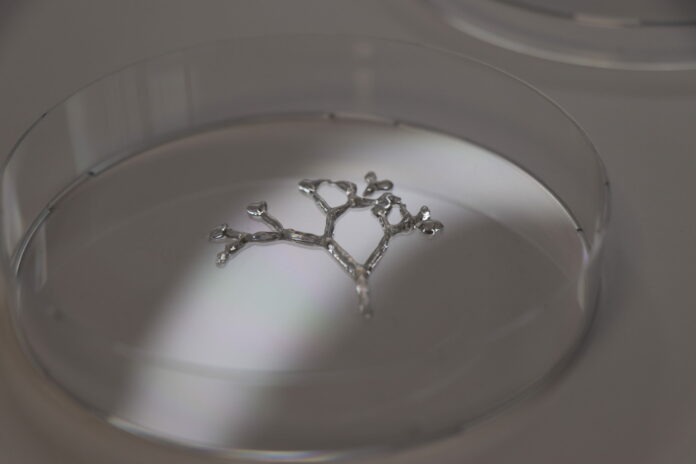One crucial challenge of 3D bioprinting is the use of suitable materials to enable the 3D printing of living cells which are called bioinks.
The most commonly applied materials in 3D bioprinting are still derived from animal sources such as gelatin or collagen, hence the huge need for animal free alternatives. These alternatives will help to replace animal testing, but also to resemble processes and conditions in human tissue more closely. In this respect, synthetic polymers have also been explored, and while several of these materials are safe to use in the human body, these synthetic options are an oversimplification of the complex natural situation in vivo and don’t fully bridge the gap between current in vitro tests and animal models.
The Human bioinks for 3D printing (HU3DINKS) project aims to overcome these limitations via the development of high-performing human tissue-based bioinks suited for different 3D bioprinting technologies including extrusion printing, and high-resolution laser-based printing. While there are already commercial human tissue-derived materials available on the market, their bioactivity and printing performance remains poor. Thus, the HU3DINKS consortium aims at converting commercially available human tissue-derived materials into bioinks, which can be printed in a straightforward manner.
Future applications of biofabrication include regeneration of human tissues and ‘organ printing’. “However, while still many hurdles need to be overcome to convert these applications to clinical reality, the bioprinting technology already offers solutions in the field of animal free testing. Here, the ‘human 3D inks’ can make a huge difference to make bioprinting truly animal free” says, Jasper Van Hoorick, CEO of BIO INX.
As a result, drugs, or cosmetics can be tested on 3D printed human tissue models, which form a better mimic of native 3D tissues in comparison to conventional 2D cell culture techniques. This approach is in line with the 3R principle* of reducing, replacing, and refining animals used for scientific purposes.
To achieve this goal, especially high-resolution bioprinting based on 2-photon polymerization (2PP) can be crucial for bringing the field to the next level, as it is the only technology allowing printing at subcellular resolution, thereby making it possible to mimic the complicated microcellular architecture. It is also one of the only technologies enabling direct printing within microfluidic chips to enable straightforward drug screening.
Consortium members
The project has been granted in the framework of the international research activities by small and medium-sized enterprises (IraSME) initiative, which aims to stimulate cross-border collaborations between member countries. The HU3DINKS consortium unites partners with a unique complementary expertise from Belgium (funded by VLAIO) and Austria (funded by FFG).
THT Biomaterials (Vienna, Austria) will contribute with their unique expertise on human placenta-derived materials. BIO INX (Ghent, Belgium) is expert in the field of bio ink development for multiple printing technologies and is responsible for turning the human placenta-derived materials from THT Biomaterials’ into ready-to-use printable formulations for different printing technologies. The project is also supported by Morphomed (Vienna, Austria) and their medical grade silk technology, and UpNano (Vienna, Austria), specialists in the development of 2PP (bio) high-resolution bio 3D printing technologies. Additionally, the Ludwig Boltzmann Institute for Traumatology, (the Research Center in cooperation with AUVA) will be responsible for the biological validation of the newly developed bioinks.
Remember, you can post free of charge job opportunities in the AM Industry on 3D ADEPT Media or look for a job via our job board. Make sure to follow us on our social networks and subscribe to our weekly newsletter : Facebook, Twitter, LinkedIn & Instagram ! If you want to be featured in the next issue of our digital magazine or if you hear a story that needs to be heard, make sure to send it to contact@3dadept.com


